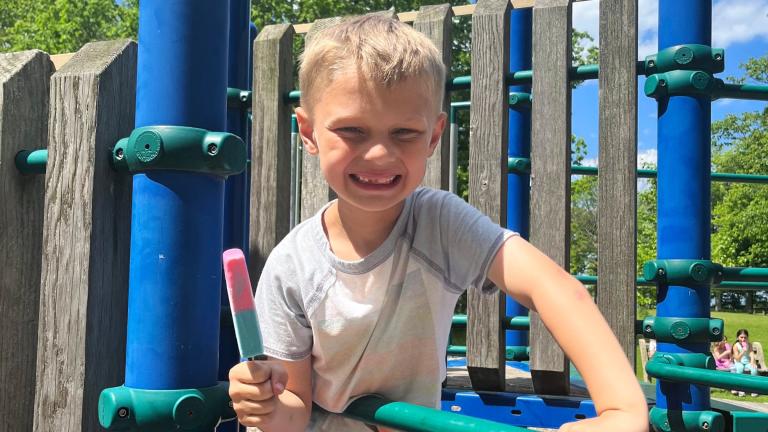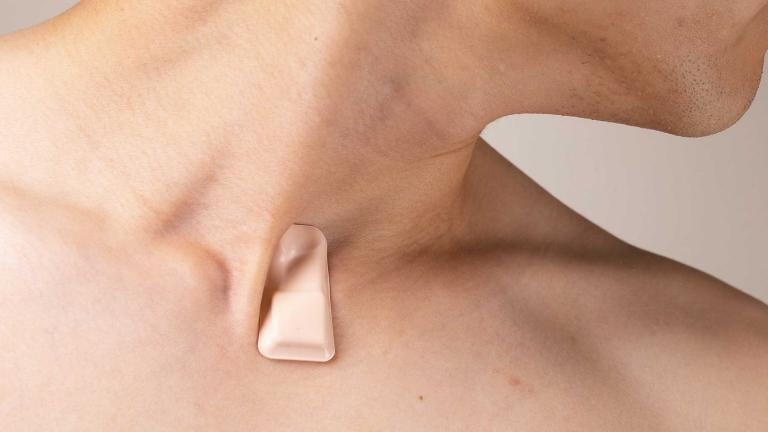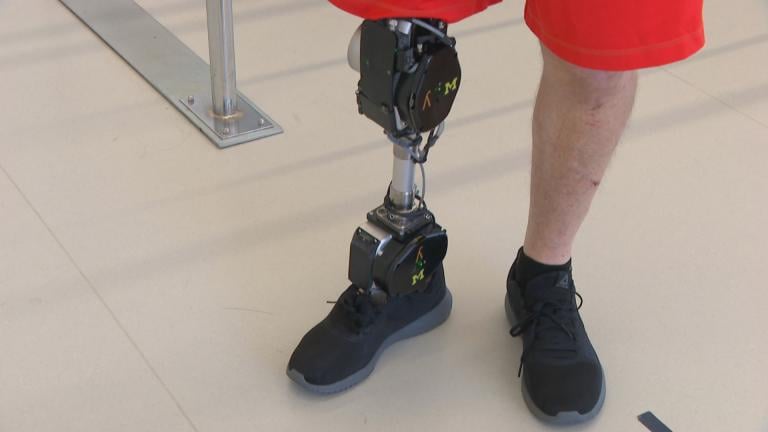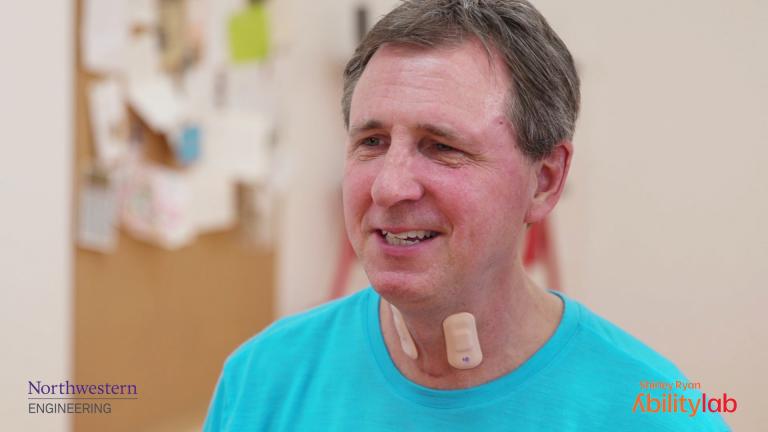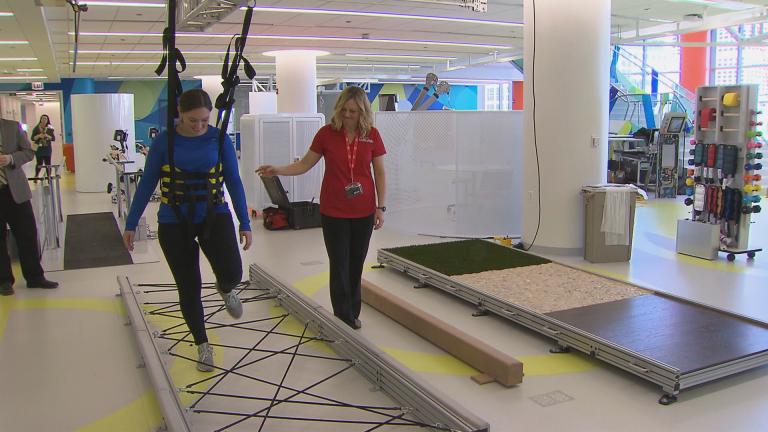The World Health Organization estimates that at least 30 million people around the world need some form of prosthetic limb.
Global conflict from Ukraine to Gaza is only serving to drive those numbers higher.
For years, researchers say there was very little advancement in the field. But in recent decades, prosthetic limbs have come a long way.
And at the multidisciplinary Shirley Ryan AbilityLab in downtown Chicago, the next generation of bionic prosthetics are being developed.
“There have been tremendous advances in the last 20 years since I’ve been working in the field, both in the terms of bionic arms and bionic legs,” said Dr. Levi Hargrove, who leads the team at the Regenstein Foundation Center for Bionic Medicine.
For many years, Hargrove says there was little development in the field.
“There was kind of a plateau in the technology that was available. It was very passive, sticks and springs,” said Hargrove.
But in the late 1990s, researchers began to develop computerized bionic limbs.
“And then we started adding more sensors to them and motors to them to give a sense of response to the user,” said Hargrove.
Researchers are now on the cusp of developing prosthetics that could transform clinical care, he said.
Chicago sculptor Terry Karpowicz, who lost his leg in a motorcycle accident in 1975, has been working with the lab for more than a decade helping them test and develop their prosthetic legs.
Karpowicz says the first prosthetic he received after his accident was very primitive.
“My initial leg was a leather socket with two metal bars that went down to a flat piece of plywood,” said Karpowicz. “I have seen the progression over the years of all the different iterations, going from a wooden leg to a fiberglass leg and now a powered knee. It’s very exciting, it’s my way of making lemonade.”
Karpowicz compares the latest version of the leg he is testing to “a Tesla as opposed to a pickup truck.”
“There’s a freedom of movement that I don’t actually have to think about, which allows me to think about other things,” said Karpowicz. “It operates from my intentions. Whatever I want to do it’s there to support me. It’s like a relationship, the more you use it, the more you can rely on it, the more you can trust it.”
“A leg like this will change someone’s life overnight,” said Karpowicz.
Suzanne Finucane, director of research operations at the Center for Bionic Medicine, says she has seen remarkable progress during her time at the lab.
“I’ve been with this team for over 10 years now and the first device we had was quite a bit heavier, but it did provide power and provided assistance,” said Finucane. “To see the progression to the device that we are working with today has been amazing.”
The movement of the limb currently being tested by Karpowicz is controlled by signals from the muscles in his residual limb picked up by sensors within the prosthetic.
Depending on what Karpowicz is doing – walking or climbing or descending stairs, for instance – different muscles are firing. Sensors within the prosthetic leg relay data to the lab’s engineering team which can then fine tune those movements.
“So if Terry wanted to change how much the leg was swinging or if he wanted more power going up and down the stairs, we can adjust all of that,” said Finucane.
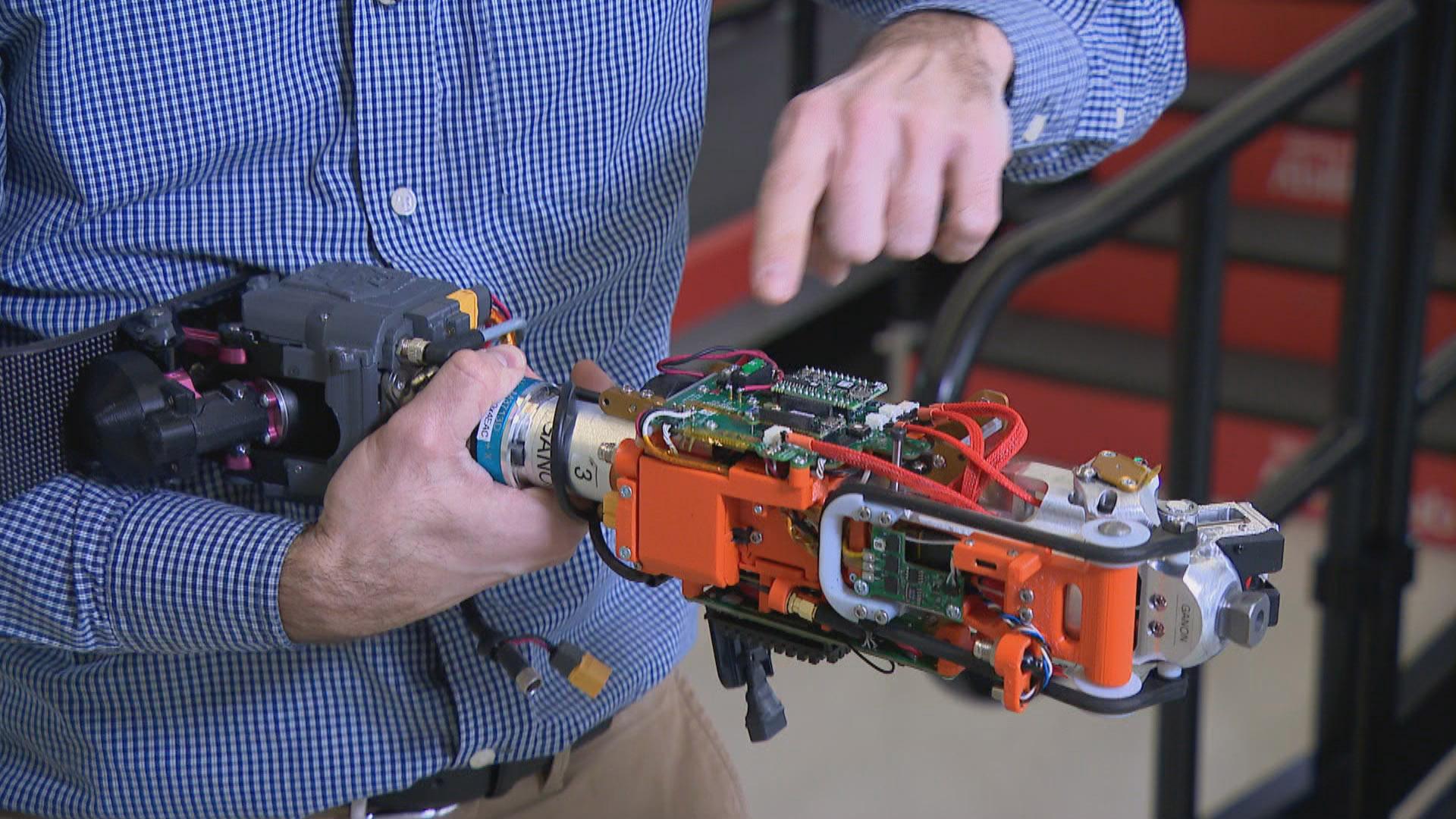 Frank Ursetta holds a portion of a bionic limb being developed by the Shirley Ryan AbilityLab in Chicago. (WTTW News)
Frank Ursetta holds a portion of a bionic limb being developed by the Shirley Ryan AbilityLab in Chicago. (WTTW News)
While the lab’s latest prosthetic leg is a sophisticated combination of motors, sensors and custom designed parts, Hargrove says the team makes every effort to reduce the overall cost.
“We use components from other industries wherever possible,” said Hargrove. “It’s a conscious strategy, and so if we’re using batteries of which there are several million made for the car industry, we can get them at a reasonable cost. If we’re using micro controllers used in the cellphone industry, we can get them at a reasonable cost.”
While research and development costs may be high, Hargrove says mass production would create economies of scale.
“Right now, we’ve tested this device on relatively few people – dozens,” said Hargrove. “But they have been designed so that they can be mass produced in the future at a reasonable cost. So I believe that this category of device will become broadly available to hundreds of thousands or millions of people that need them in the future.”
Funding for the lab’s research comes from multiple sources, from philanthropic support to the military, says Hargrove.
“The Department of Defense is certainly interested in this technology. They funded a lot of the original work and they continued to fund it,” said Hargrove. “They have a vested interest in doing the best for the wounded warriors (and) the new conflict in Ukraine has resulted in an extraordinary number of new amputees that need technology like this or other technology.”
Research engineer Frank Ursetta, who helps design and develop components used in the teams prosthetics, says he derives enormous satisfaction from seeing his work help someone’s life better.
“I’ve worked in industry before and although it’s nice to make products that get out there and people use, they don’t really help people. A lot of products are just made to make money,” said Ursetta. “It’s nice to work on something that I can see it helping someone. The best part of it is the fact that we get to put it on a subject and see them walk on it and enjoy it and enjoy something new.”


